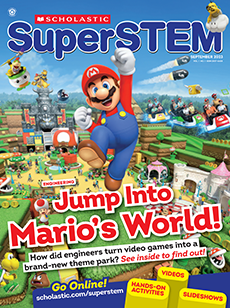The science fiction novel The War of the Worlds by H.G. Wells was published in 1898.
At that time, many people believed aliens lived on Mars. That’s because a few years earlier, an astronomer thought he saw line-like structures on the planet’s surface. He called them channels. People thought Martians had built these structures. (With modern technology, we know this isn’t the case.) Inspired by the thinking there was life on Mars, Wells wrote a book about a scary idea: What if these aliens invaded Earth?

